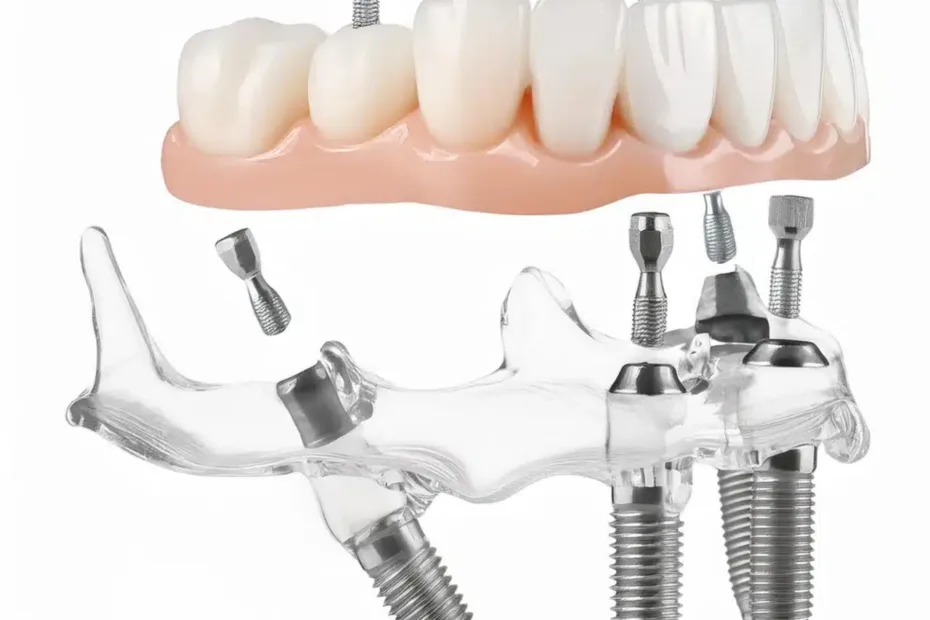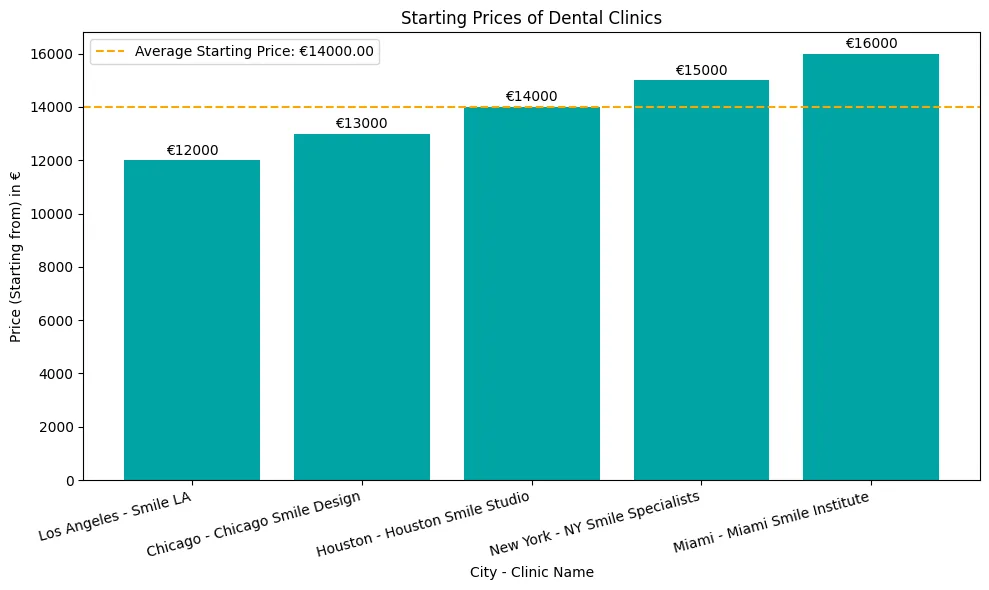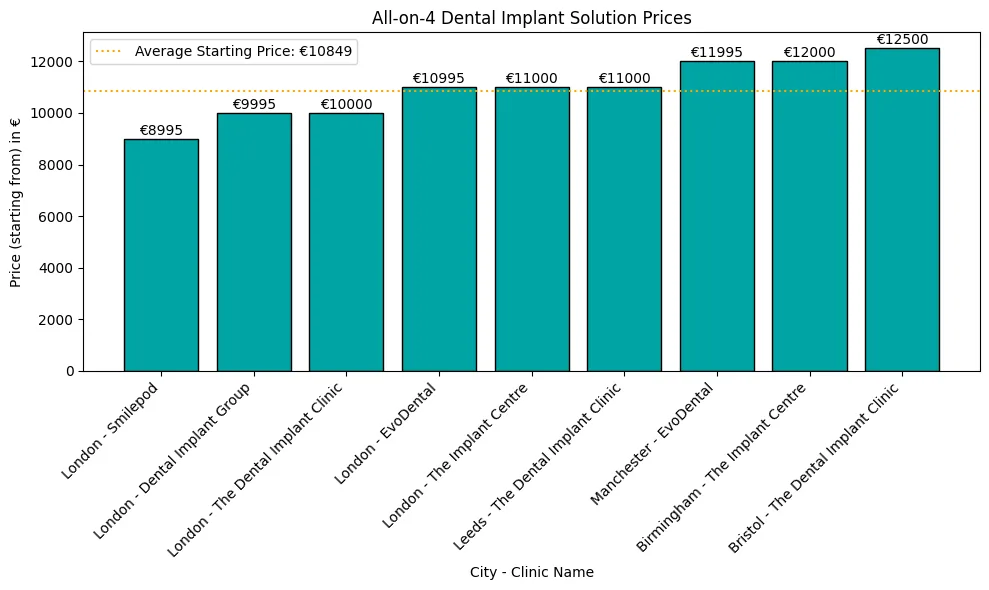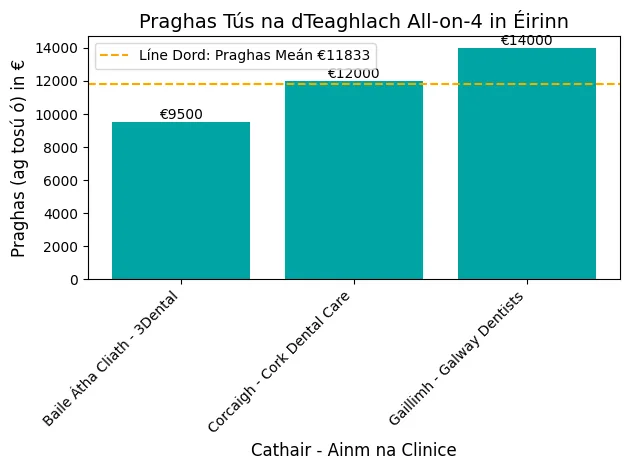All-on-4 dental implants are a popular choice for those seeking a full-mouth restoration, but with so many material options available, it can be overwhelming to decide which one is best.
If you’re considering All-on-4 implants, you’re likely wondering which material will provide the perfect balance of durability, aesthetics, and affordability.
What are the Top 3 Materials for All-on-4 Implants?
The top materials for All-on-4 implants—acrylic, porcelain, and zirconia—each offer unique benefits. Acrylic is affordable but less durable. Porcelain provides a natural look and durability but costs more. Zirconia is the strongest, with high durability and aesthetics, but can be pricey. Costs range from €7,990 (Acrylic) to €17,990 (Zirconia) per arch
| Material | Key Benefits | Considerations | Approximate Cost Range (per arch) |
|---|---|---|---|
| Acrylic |
– Cost-effective – Versatile – Easily adjusted and repaired |
– Shorter lifespan (up to 5 years) – May require frequent repairs – Less durable (70% survival rate over 5 years) |
€7,990 |
| Porcelain |
– Natural appearance – Extended durability – Resistant to wear and tear |
– More expensive than acrylic – Challenging to repair if damaged – 90% survival rate over 8 years |
€10,990 |
| Zirconia |
– Highest durability – Aesthetic appeal – Minimal risk of damage |
– Most expensive option – May cause wear on opposing teeth – 98% survival rate over 10 years |
€17,990 |
Overview of All-on-4 Implant Materials
When considering All-on-4 dental implants, understanding the materials used is crucial.
Here’s a detailed look at each of the top 3 materials:
Acrylic All-on-4 Implants
Acrylic implants are known for their versatility and cost-effectiveness.
They are particularly suitable for individuals who do not clench or grind their teeth frequently.
However, they have a shorter lifespan compared to other materials and may require more frequent repairs.
Studies have shown that acrylic implants can last up to 5 years with proper care (1).
Key Benefits:
Cost-Effective: Acrylic implants are generally less expensive than other materials.
Versatile: They can be easily adjusted and repaired.
Considerations:
Shorter Lifespan: Acrylic implants may need to be replaced more often.
Repair Needs: They can be more prone to damage and require frequent repairs.
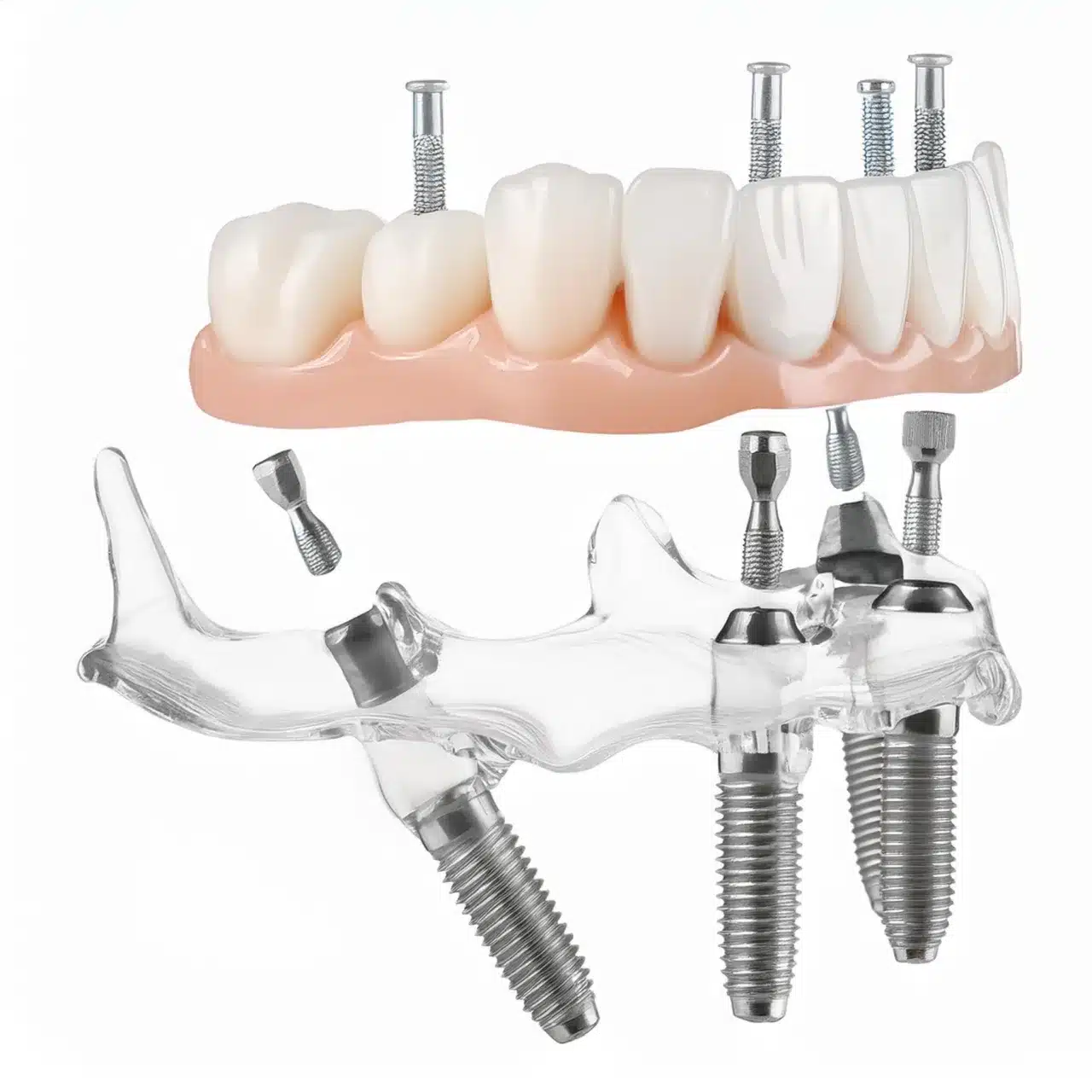
Porcelain All-on-4 Implants
Porcelain implants offer a natural appearance and extended durability.
They are more expensive than acrylic implants and can be challenging to repair.
However, their aesthetic appeal and long-lasting nature make them a popular choice.
Research indicates that porcelain implants can last up to 10 years or more with proper maintenance (3).
Key Benefits:
Natural Appearance: Porcelain implants mimic the natural look of teeth.
Durability: They are more resistant to wear and tear.
Considerations:
Higher Cost: Porcelain implants are more expensive than acrylic.
Repair Challenges: They can be difficult to repair if damaged.
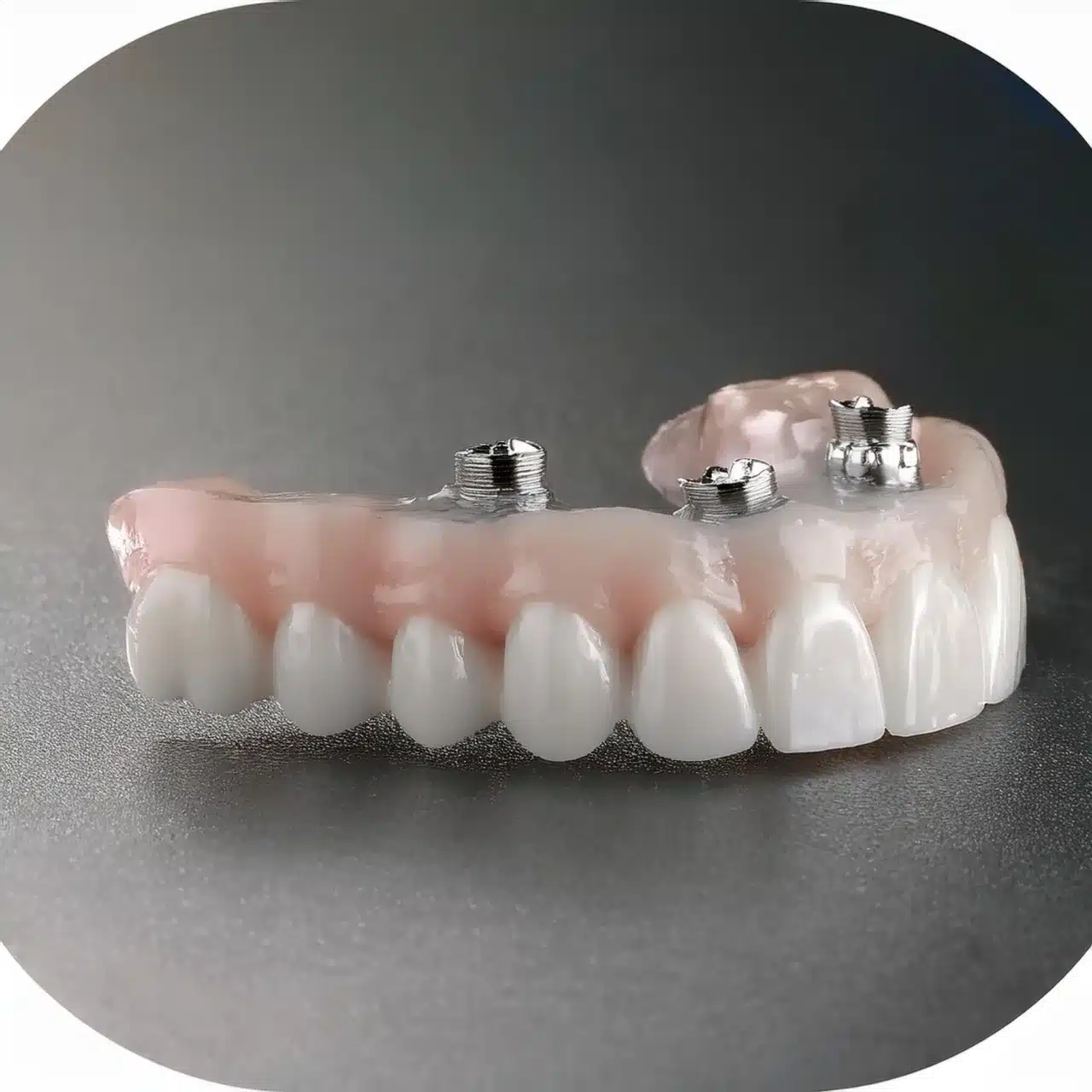
Zirconia All-on-4 Implants
Zirconia implants are the strongest and most durable option, offering high aesthetics and minimal risk of damage.
They are less prone to wear and tear but can be expensive and may cause wear on opposing teeth.
Studies have shown that zirconia implants can last up to 15 years or more with proper care (5).
Key Benefits:
High Durability: Zirconia implants are the most resistant to damage.
Aesthetic Appeal: They provide a natural and appealing look.
Considerations:
Higher Cost: Zirconia implants are more expensive than acrylic and porcelain.
Wear on Opposing Teeth: They can cause wear on opposing natural teeth.
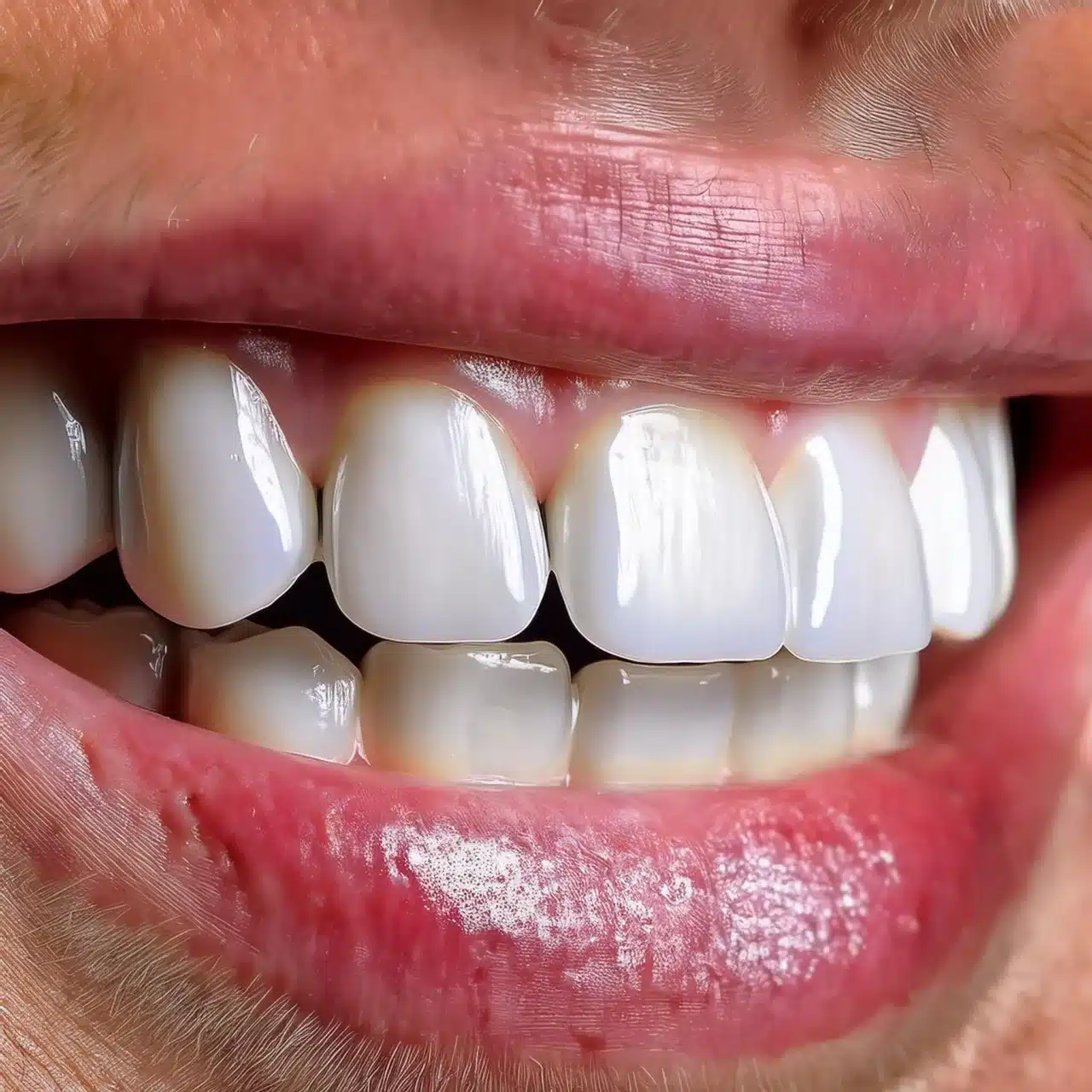
Comparing Durability and Aesthetics
When choosing an All-on-4 implant material, understanding the durability and aesthetics of each option is crucial. Here’s a detailed comparison:
Durability: Which Material Lasts the Longest?
Durability is a key factor in selecting an All-on-4 implant material.
Studies have shown that zirconia implants exhibit the highest durability, with a survival rate of up to 98% over 10 years (6).
Porcelain implants also offer high durability, with a survival rate of up to 90% over 8 years (3).
Acrylic implants, while cost-effective, have a lower durability, with a survival rate of up to 70% over 5 years (1).
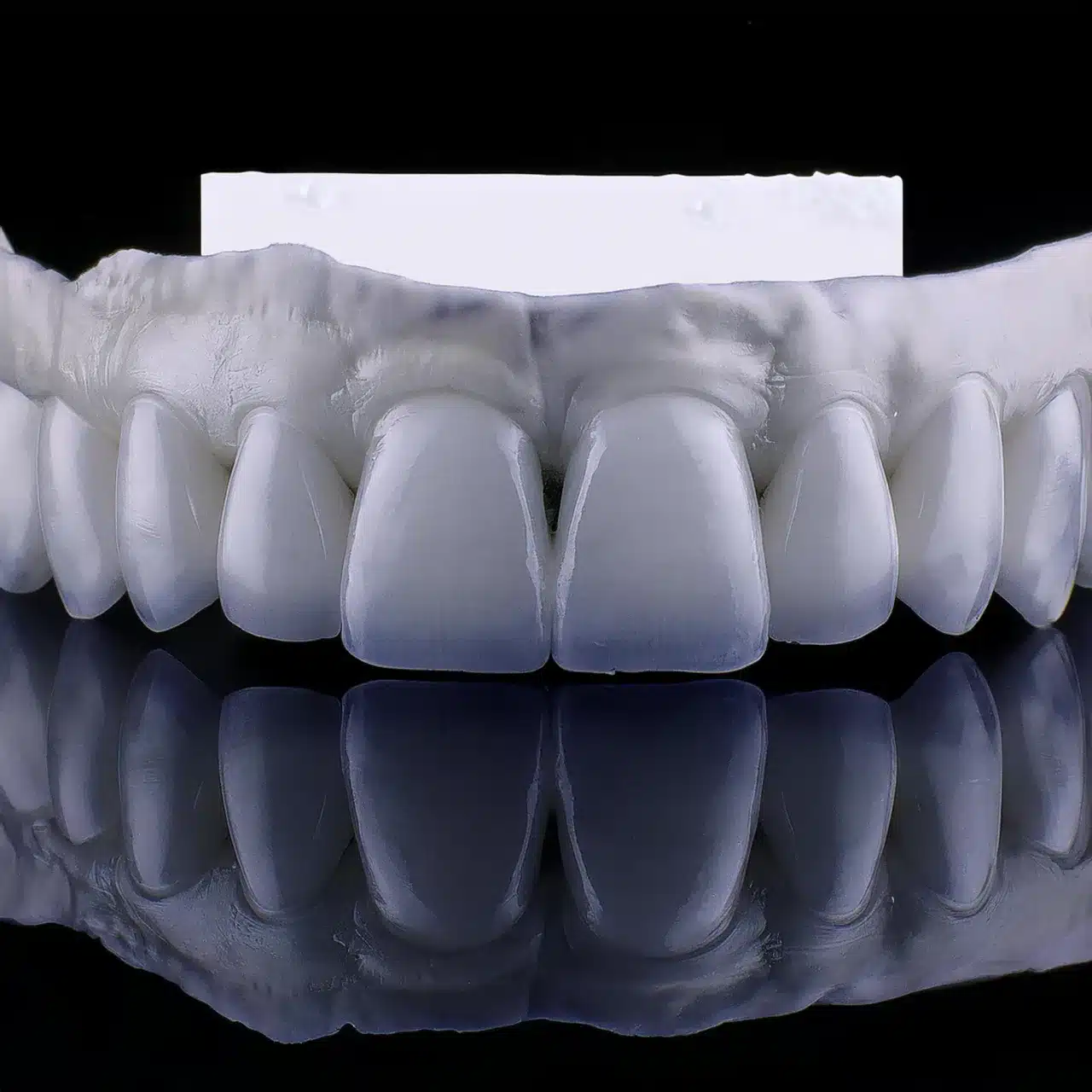
Key Points:
Zirconia: high durability with a survival rate of up to 98% over 10 years.
Porcelain: high durability with a survival rate of up to 90% over 8 years.
Acrylic: lower durability with a survival rate of up to 70% over 5 years.
Which Material Offers the Most Natural Look for Dental Crowns?
Aesthetics play a significant role in the choice of All-on-4 implant material.
Porcelain implants are known for their natural appearance, closely mimicking the look of natural teeth (6).
Zirconia implants also offer high aesthetics, with a natural translucency that enhances their appearance (5).
Acrylic implants, while versatile, may not provide the same level of aesthetic appeal as porcelain and zirconia (2).
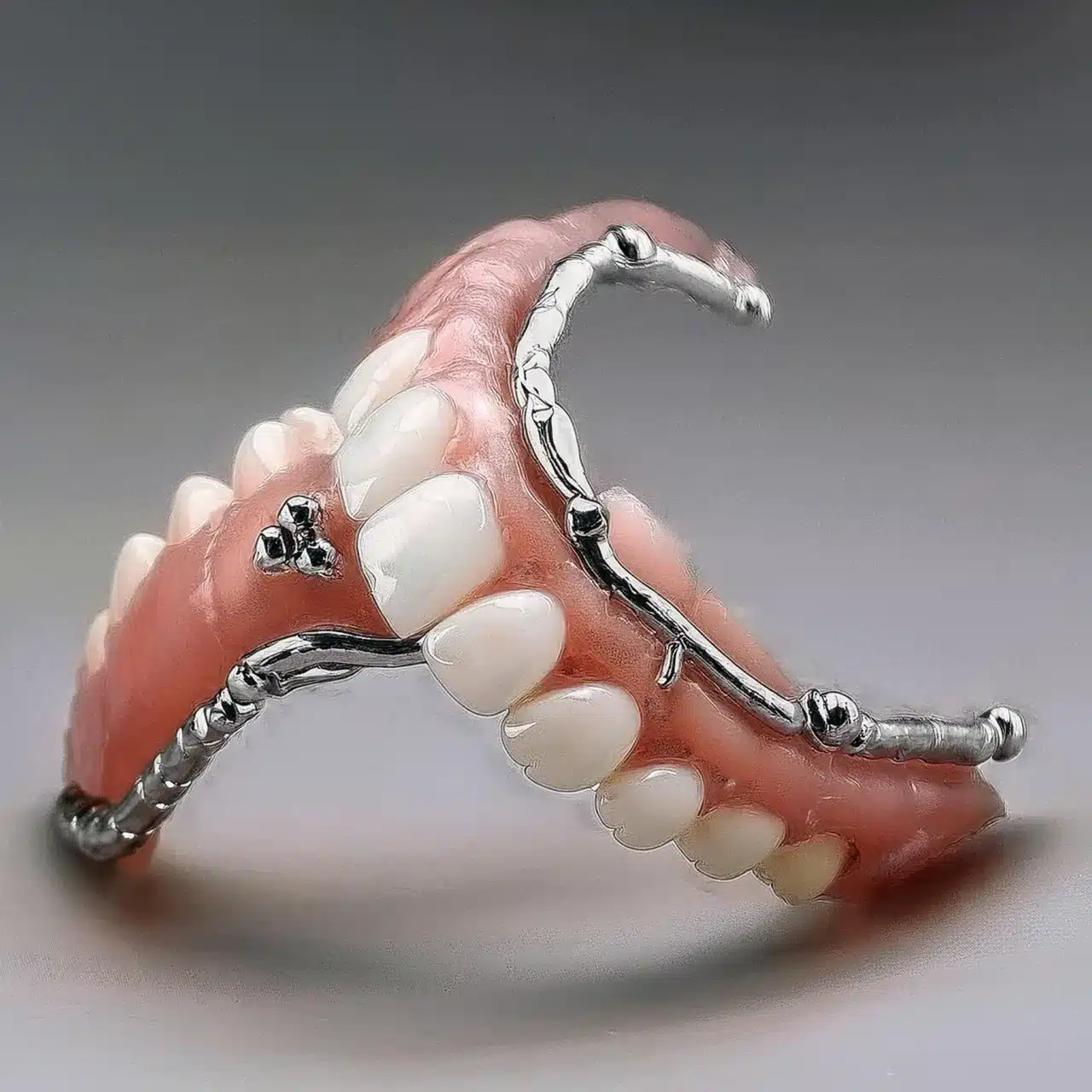
- Key Points
-
Porcelain offers a natural appearance, closely mimicking natural teeth.
-
Zirconia: Provides high aesthetics with natural translucency.
-
Acrylic: May not offer the same level of aesthetic appeal as porcelain and zirconia.
Factors to Consider When Choosing an All-on-4 Material
Choosing the right material for your All-on-4 implants involves considering several factors that can impact the success and longevity of the treatment.
Here’s a detailed look at these factors:
Cost Considerations
Cost is a significant factor in choosing an All-on-4 material.
The prices can vary significantly, with acrylic implants being the most cost-effective option, starting at approximately €7,990 per arch.
Porcelain and zirconia implants are more expensive, with prices ranging from €10,990 to €17,990 per arch (1).
It’s essential to weigh the cost against the benefits and durability of each material.
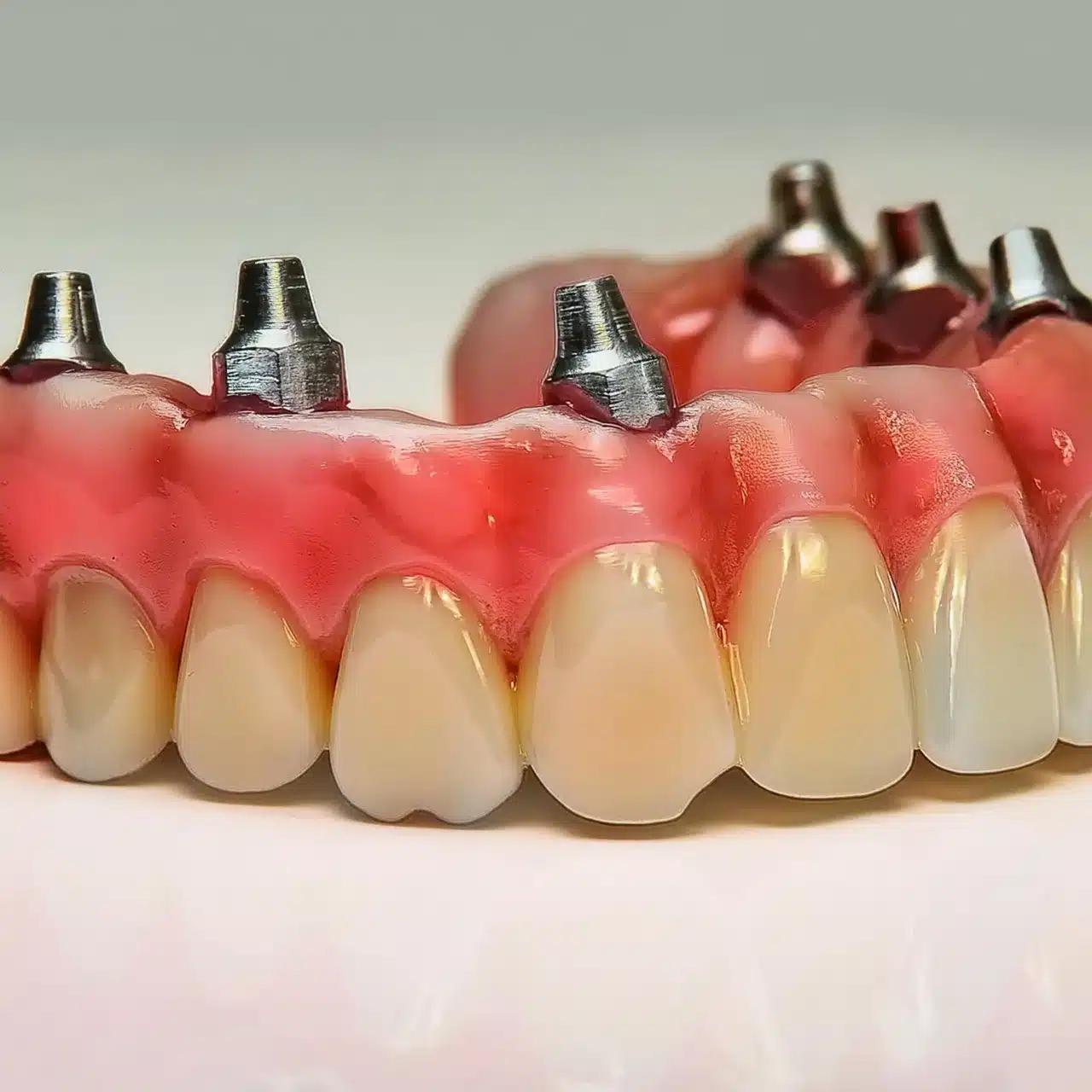
Key Points:
Acrylic: Most cost-effective, starting at €7,990 per arch.
Porcelain: Mid-range, starting at €10,990 per arch.
Zirconia: Most expensive, starting at €17,990 per arch.
Dental Habits and Lifestyle
Dental habits and lifestyle can significantly impact the longevity of All-on-4 implants.
For individuals who clench or grind their teeth frequently, zirconia implants may be the best option due to their high durability (4).
Porcelain implants are suitable for those with moderate dental habits, while acrylic implants are best for those with minimal grinding or clenching habits (3).
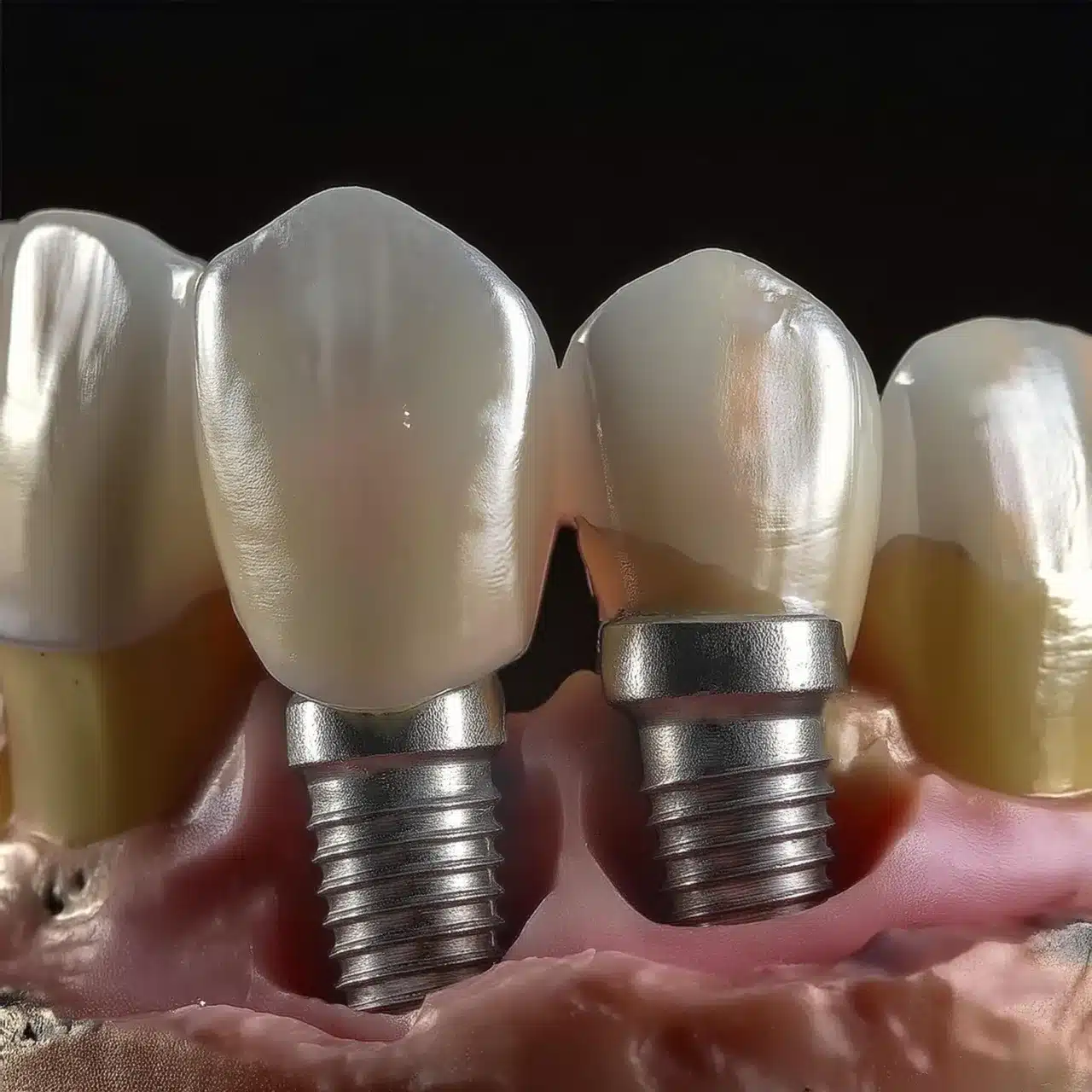
Key Points:
Zirconia: Ideal for heavy grinders or clenchers.
Porcelain: Suitable for moderate dental habits.
Acrylic: Best for minimal grinding or clenching habits.
Oral Health and History
Oral health and history are crucial in determining the best material for All-on-4 implants.
Individuals with a history of periodontal disease or other oral health issues may benefit from zirconia implants due to their resistance to bacterial accumulation (2).
Porcelain implants are suitable for those with a moderate oral health history, while acrylic implants are best for those with a good oral health record (6).
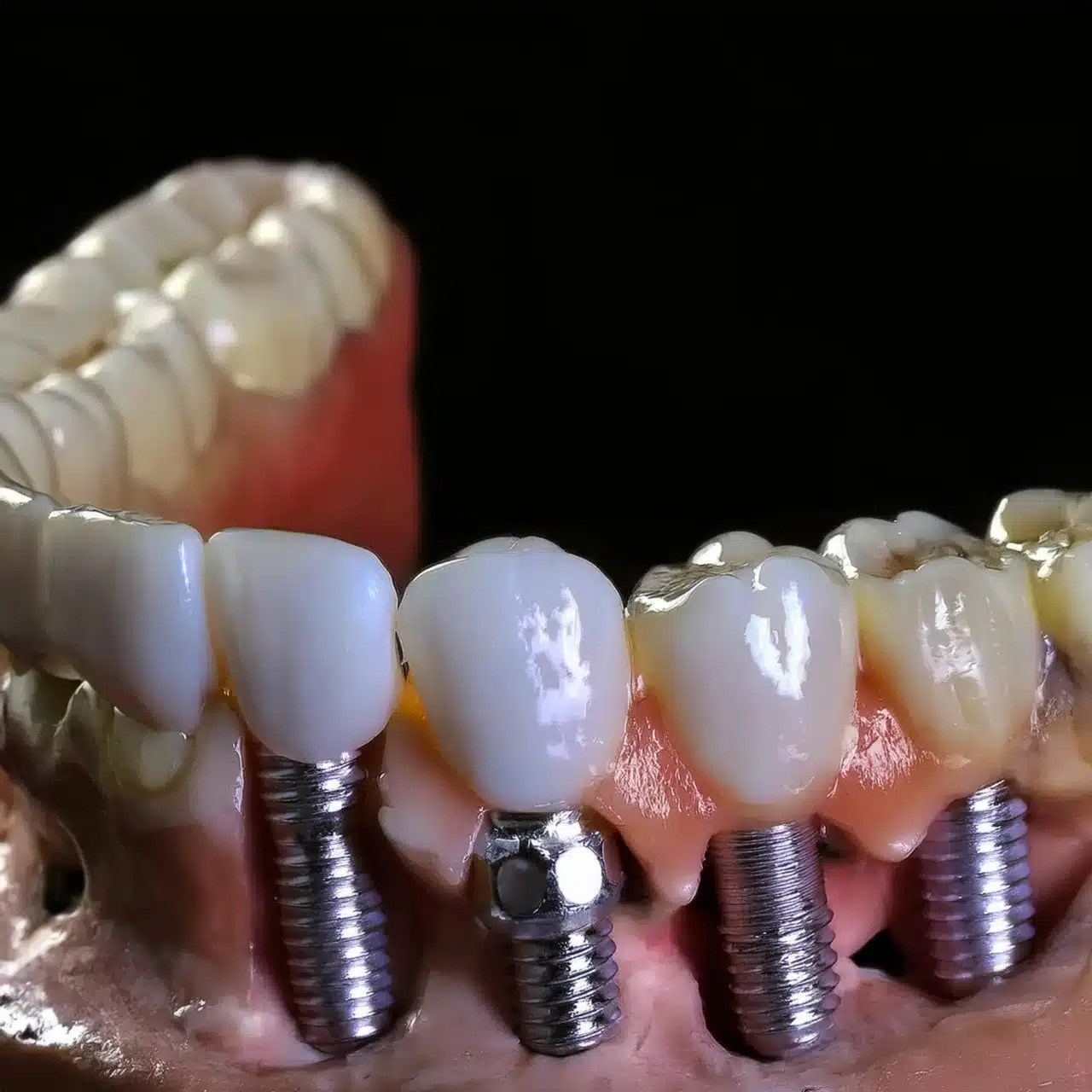
Key Points:
Zirconia: Ideal for those with a history of oral health issues.
Porcelain: Suitable for those with a moderate oral health history.
Acrylic: Best for those with a good oral health record.
Conclusion & Key-Takeaways
Key Takeaways:
Material Selection: The choice of material for All-on-4 implants depends on individual needs, including durability, aesthetics, and affordability.
Durability: Zirconia implants offer the highest durability, followed by porcelain and then acrylic.
Aesthetics: Porcelain and zirconia implants provide a more natural appearance compared to acrylic.
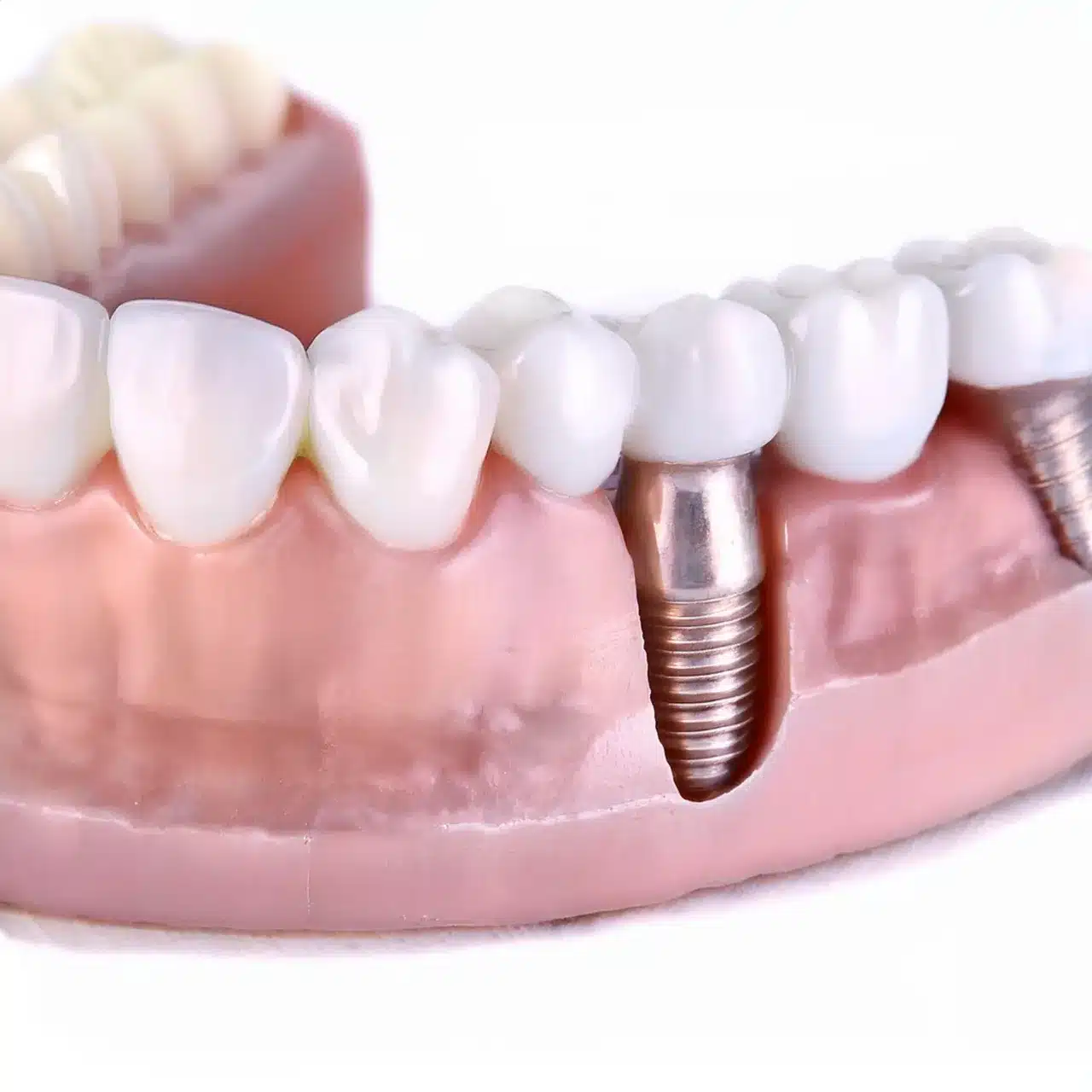
Conclusion:
Choosing the right material for All-on-4 dental implants is crucial for ensuring long-term success and satisfaction.
By considering factors such as durability, aesthetics, cost, dental habits, and oral health history, individuals can make informed decisions that meet their unique needs.
Whether opting for acrylic, porcelain, or zirconia, understanding the benefits and limitations of each material is essential for achieving the desired outcomes.
FAQ
References
- Albrektsson T, et al. Osseointegrated titanium fixtures in the treatment of dentulousness. J Prosthet Dent. 1986;55(5):597-606. Article: Osseointegrated titanium fixtures in the treatment of dentulousness
- Buser D, et al. Long-term evaluation of non-submerged ITI implants. Part 1: 8-year life table analysis of a prospective multi-center study with 2359 implants. Clin Oral Implants Res. 1997;8(3):161-172. Article: Long-term evaluation of non-submerged ITI implants. Part 1: 8-year life table analysis of a prospective multi-center study with 2359 implants
- Adell R, et al. A 15-year study of osseointegrated implants in the treatment of the edentulous jaw. Int J Oral Surg. 1981;10(6):387-416. Article: A 15-year study of osseointegrated implants in the treatment of the edentulous jaw
- Branemark PI, et al. Osseointegrated implants in the treatment of the edentulous jaw. Experience from a 10-year period. Scand J Plast Reconstr Surg Suppl. 1977;16:1-132. Article: Osseointegrated implants in the treatment of the edentulous jaw. Experience from a 10-year period
- Esposito M, et al. Interventions for replacing missing teeth: different types of dental implants. Cochrane Database Syst Rev. 2019;10:CD003815. Article: Interventions for replacing missing teeth: different types of dental implants
- Jemt T, et al. Implant treatment with fixed prostheses in the edentulous maxilla. Part 1: implants and biologic responses. Clin Implant Dent Relat Res. 2006;8(2):83-95. Article: Implant treatment with fixed prostheses in the edentulous maxilla. Part 1: implants and biologic responses

